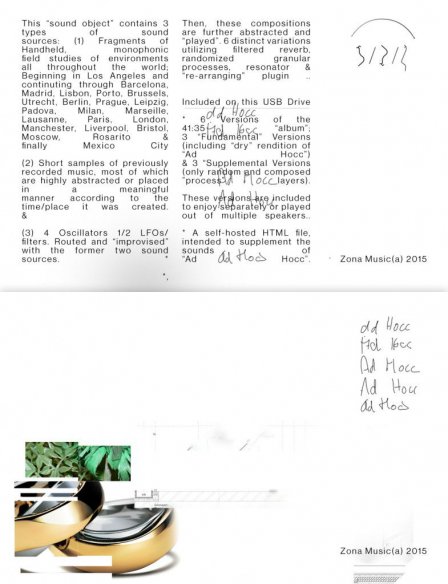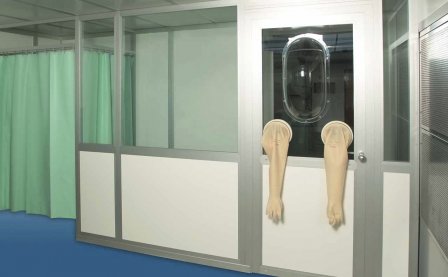Fundamental
The vastness of data has re-familiarized us with modes of fundamentality and modularity, format and reformat, as essential considerations in navigating the open seas of information. Of course, the manipulation of code itself is embodied in the very structures that contain our net-browsing. Our sense of “being online” is defined and extended by the fundamental construction of code. Freedom in “designing” our web experience is tied to whether or not we have knowledge of code’s modularity — its reformat-table language. Thus, our entire “reading” of the internet finds its roots in HTML, CSS, PHP, etc; it’s the rearrangement of the modular components of code that creates the “transition property” that made the website feel smoother, that gave it a sense of progressive enhancement, that was reassembled into the transformicon that feels intuitive and “right” for the user.
D/P/I’s approach to music bears witness to how this modular, axiomatic exchange can occur between established and practiced tendencies to create constantly new applications of a source material. As Birkut has discussed, the rearrangement of 10 or 15 micro-compositions “allows for an almost infinite number of combinations — an indication of Gray’s compositional knack.” If anything, Gray’s “knack” has demonstrated the incredible sonic sensitivity possible when a musician detaches from how time constrains their work, instead focusing on the simple act of speaking their language. The development of Gray’s language, then, has involved stripping it down to reach its fundamentality, further abstracting his playful use of cultural reference, as seen in FRESH ROSES and ESPRESSO DIGITAL, to lead to an eventual development of a D/P/I-ian sort of reformatted jazz. If MN.ROY was the culmination of Gray being “unstuck,” in a musical sense, from statically experiencing music temporally located in “moments” (moments that are expected to carry most of the compositional weight), then Ad Hocc is the “fundamental” piece that essentializes his mature strategy of speaking his re-combinative process like an improvisatory language.
Of course, Ad Hocc detaches itself from anything culminative or singular by emphasizing modularity within the very construction of an album experience. The USB drive that contains the music features six versions of the “album” with the intentionally vague statement that “these versions are included to enjoy separately or played out of multiple speakers.” The six pieces themselves are divided into three “fundamental” versions (including a “dry” rendition of the album) and three “supplementary versions,” which are “process” layers that are, well, supplementary. The format itself fulfills any “Lego-building” or IKEA fantasy one might want to have applied to D/P/I’s music (a personal fantasy, to be sure). But moreover, it serves to blatantly emphasize Gray’s commitment to an ethos of constructing intuitive, enjoyable forms out of the multiple — to find something “fundamental” out of his atemporal language, one that’s only located in the act of “working” and “speaking.” The procedural nature of his music is clear given how prolific Gray’s musical output has been over the past few years; dude is constantly in motion. The sheer amount of ideas that fly by in any given one of his compositions demonstrates a working mind “loosened” from oppressive musical structures that seek to define time separate from this act of “speaking.” In this sense, Gray has managed to disentangle himself, as if he’s found some kind of secret map that contains clues to the improvisatory nature of an entirely grander framework; and, he sees to it that the map’s “code” is recombined enough times such that the “destination” is inward, the map just demands that you get to work.
Still, when approaching Ad Hocc, a straight-forward question needs to be answered: How the hell are we supposed to listen to this thing? Regardless of its unique recombinative structure, it’s clear that we aren’t necessarily supposed to listen to the album in any particular manner. The multi-speaker option given is just a suggestion, an open door that invites the listener to experiment with the album in a similar way that Gray experiments with his sound sources daily. As a material fact, there’s definite pleasure to be had in checking out how the album fluctuates through different pairings and repairings. Perhaps an even more subtly radical move was Gray’s decision to have no track divisions. The idea of a D/P/I “track” has always seemed strange, and if anything, MN.ROY’s track division simply created a predetermined mental orientation that helped frame certain “vibes,” “colors,” or “images” within its segments. Here, we’re not given the referential luxury to frame Ad Hocc’s abstract tendencies, samples, or sounds contained therein; there’s just a clear, open expanse of 42 minutes when Gray makes the absolutely wonderful happen.
I think Ad Hocc is the best D/P/I album, because it’s his most recent. Yes, the “album” has amazing “moments” that you’ll want to return to; but, more importantly, its emphasis on fluid experience and the pacing of that experience are in equilibrium with the compositional process Gray has developed fully throughout his work. As such, his titular use of the stylized “ad hoc” serves as the work’s only reference; it describes the piece as “formed, arranged, or done for a particular purpose only.” Perhaps this emphasizes its “fundamentality” in regards to its simultaneous hyper-intentionality and freedom of expression — the crux of D/P/I’s methodology as the interchangeability of the fundamental and supplementary — an emphasis on the module of work.
Supplemental
There are material and compositional strategies at play, both supplemental and attached to the fundamental process of work and speech itself, that stylize Ad Hocc into clear definition. Gray articulates the album’s materials into three categories: The first includes sound sources attached to temporal experience, contingently relating to place; the second involves the meaningful application of history; the third is modular and granular synthesis.
The first sound source, field recording, emphasizes Gray’s own relationship to and study of place. There is something quintessentially “L.A.” in D/P/I’s orientation — his freewheeling optimism and occasionally dirty, positive-punk-like freedom in sound-craft. Yet, that freedom is re-imagined through the perception of any “field recording” being in constant flux and transport; no recording is ever presented directly. Rather, the recording is “studied” and reprogrammed in relation to constantly shifting new places, new sounds, new environments. As such,Ad Hocc includes field recordings from L.A., Barcelona, Madrid, Lisbon, Porto, Brussels, Utrecht, Berlin, Prague, Leipzig, Padova, Milan, Marseille, Lausanne, Paris, London, Manchester, Liverpool, Bristol, Moscow, Rosarito, and Mexico City. Consider the raw, physical momentum that occurs when the human body is flung across the world in a hunk of flying steel; that momentum is occurring in tandem with the perceptual momentum of ideas and, in this case, the actual recording of sound. Thus, field sampling becomes the operative function of chronicling physical detachment from place, fueled by a physical dislocation, that culminates in the rapid mental organization of impressions to suggest further a mental speed that eventually leads to 1,000 mph composition. This can actually be heard throughout Ad Hocc, as the sounds of the world are reinterpreted into Gray’s language to suggest place’s supplementary relationship to his fundamental speech. We can only assume that the sudden rustle of voices, someone blathering about Instagram, a school bell, or a tumbling microphone are the sounds of the world presented with a complete disregard for “time,” the same disregard the world actually manifests.
The second sound source, the placement of pre-recorded samples, has always been a special device D/P/I has employed to “drive his point home.” This can be heard, for example, in his use of the motivational speaker in “DEPRESSION SESSION” or MN.ROY’s articulation that “Business is work, When you work from home… it’s work.” Ad Hocc’s use of sampling occurs primarily within specific, concentrated stretches where things are at their most fragmented. After the album’s masterful opening rendering, we’re given the technicolor swirl of a female voice echoing “my heart is…” followed by the loud-and-proud masculine yelp of “they don’t know how I’ve done, I wish I was dead” — the “dead” hilariously echoing into infinity. These moments pontificate the fragmentation of space and time by further emphasizing the disintegration of history occurring in the same language as his manipulation of all other sound sources. It’s Gray’s equal treatment of field recording, sample, and synthesis that allows for him to command his language in a unified manner, “playing” the gamut of sound sources like a virtuoso saxophonist having the time of their life.
Yet, it’s the third sound source, synthesis, that demonstrates how Ad Hocc truly outshines Gray’s previous work. He demonstrates a fuller command of spectrum, involving new treatment of low-end, and the synth design is more diverse, highlighting a shift away from the minor-fourth house synth that was dominantly featured in his earlier work. This can be heard explicitly around the 33-minute mark in any of the “fundamentals,” a moment that features blasts of crystalline synth tones that blare off in varying dissonant harmonies. The moment is an infatuating experiment in dynamic and harmonic contrast, even in aggression. It stands apart as a segment of profound difference in relation to Ad Hocc’s freer moments.
Also, the consistent use of silence helps set up Ad Hocc as one of D/P/I’s most listenable records, pacing wilder moments in between stretches of meditative repose. The vibe gets sublime around the 28-minute mark, when a harp-like ambience zens-out to a repeating, rhythmic crunch — a section of introspective tenderness that sets up the aforementioned dissonant blasts perfectly. Furthermore, Gray’s tendency to expand and shrink the decay time and range of a reverb swell, a technique he’s frequently used throughout both D/P/I records and the fantastic Sun Araw mix Forget Our Fates, is used as another flexion of his extended vocabulary. It serves to create the impression of expanding reverberation where time slows or quickens in relation to space, where granulated samples slip into pockets of echoing sonic breadth. These are familiar illusory tactics that have become essential to D/P/I’s language, yet they are used here effortlessly.
Equalization & Reprogram
Indeed, the intended flexible listening experience of Ad Hocc does emphasize the goal of D/P/I’s axiomatic language being a rearrangeable, modular faculty. Like his visual style — images loosely associated on a white background — the record’s reprogrammability opens up the listening experience as being inherently non-oppressive. Although there is binary division occurring between the “fundamental” and “supplementary” subsets, their rearrangement diminishes any experience being a “quintessential” one; rather, all are opportunities. Ad Hocc becomes a total meditation on D/P/I’s use of material, a consideration of how they interact, a study of their inherently structural design, and ultimately, a defense of their accelerated, gorgeously spontaneous performance.
More about: D/P/I




